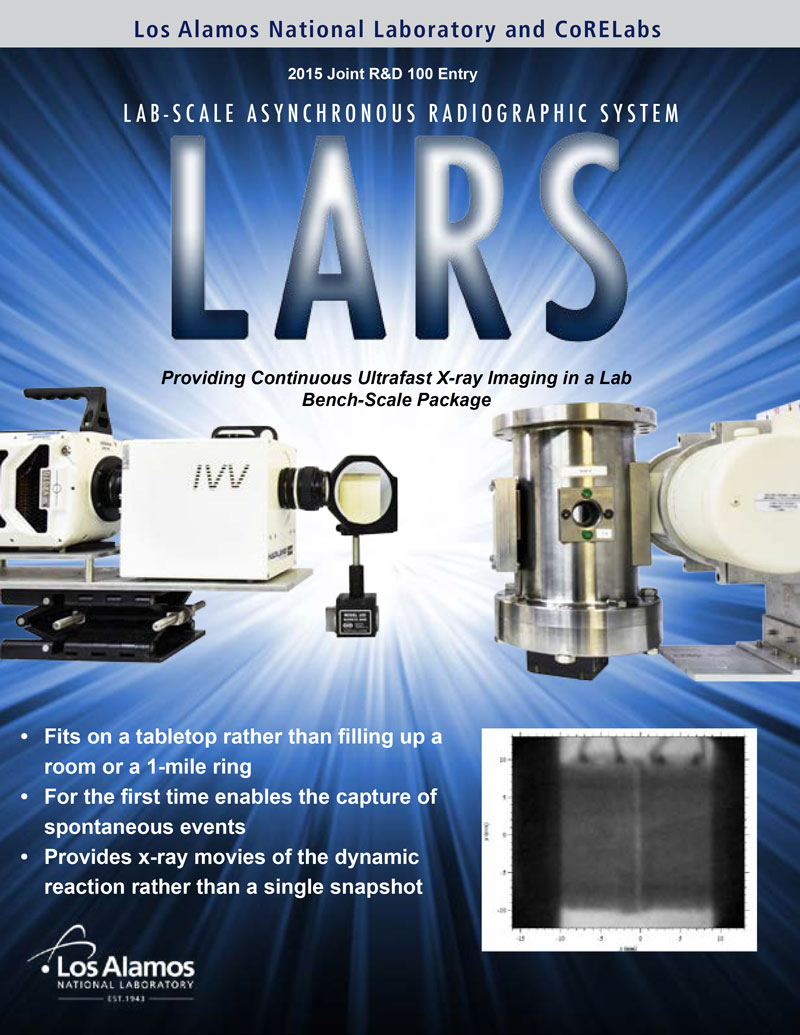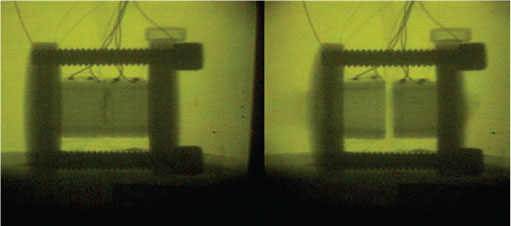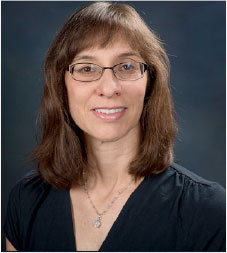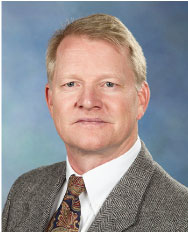Weapons Chemistry and Chemical Physics
Weapons Chemistry researches topics important to the safety and surety of our nation’s nuclear weapons.
Contact Us
- Group Leader
- Kirk Rector
- Deputy Group Leader
- Jeff Pietryga
- Group Office
- (505) 667-7121

The Lab-scale Asynchronous Radiographic System (LARS) is a small-scale radiography device for continuous high-speed x-ray imaging of spontaneous dynamic events, such as explosions, reaction-front propagation, and material failure. C-PCS researchers and collaborators at CoRELabs developed this technology, which was recognized as a finalist for a 2015 R&D Magazine “R&D 100 Award.”
Weapons Chemistry researches topics important to the safety and surety of our nation’s nuclear weapons.
Our major topics include the study of energetic materials and plutonium chemistry in regards to certification processes.
We also are active in chemical process development from bench-scale studies to the design and demonstration of integrated flow systems.
Our ultracold research programs cover topics in general chemical physics, inspired by the fact that chemistry and physics are often profoundly different at temperatures below 1 mK.
A better understanding of explosive ignition 
Scientists in the Weapons Chemistry and Chemical Physics team have created a "tabletop" dynamic radiography experiment.
The table-sized X-ray imaging apparatus enables X-ray imaging of sub-sonic dynamic events, such as thermal explosions, on a routine basis.
The small-scale aspect of both the experiment and the X-ray cinematography allows many more experiments to be performed. This approach provides a means to optimize experiments planned for larger radiographic facilities such as proton radiography.
 Laura Smilowitz of the Weapons Chemistry team received a 2014 Distinguished Performance Award for developing a new x-ray imaging capability. Her work culminated in the use of using a penetrating radiographic technique to study dynamic, spontaneous phenomena, which has the potential to transform our understanding of the thermal response of energetic materials.
Laura Smilowitz of the Weapons Chemistry team received a 2014 Distinguished Performance Award for developing a new x-ray imaging capability. Her work culminated in the use of using a penetrating radiographic technique to study dynamic, spontaneous phenomena, which has the potential to transform our understanding of the thermal response of energetic materials.
 Bryan Henson of the weapons chemistry team was selected as a 2013 Fellow in the American Association for the Advancement of Science (AAAS) for his distinguished contributions in the fields of physical chemistry and molecular spectroscopy. Singled out was his work on the application of second harmonic generation to the study of organic explosives.
Bryan Henson of the weapons chemistry team was selected as a 2013 Fellow in the American Association for the Advancement of Science (AAAS) for his distinguished contributions in the fields of physical chemistry and molecular spectroscopy. Singled out was his work on the application of second harmonic generation to the study of organic explosives.





